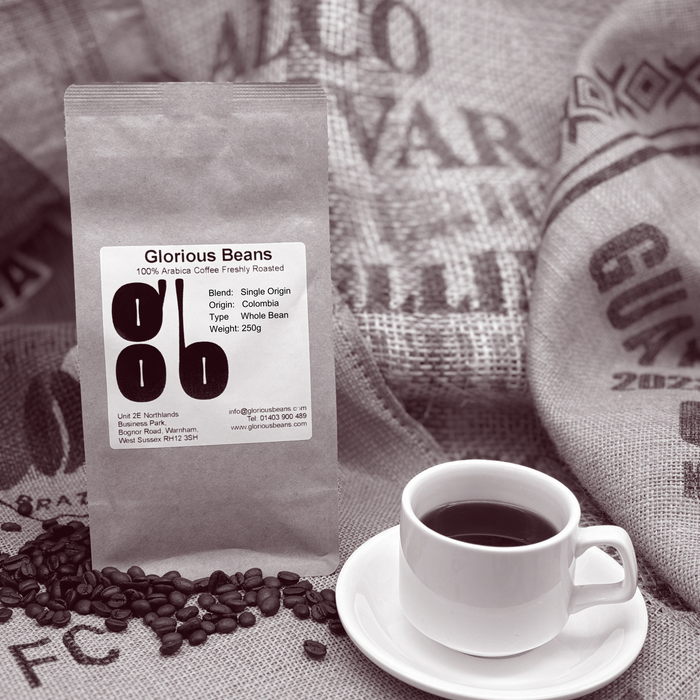The Coffee Lover’s Guide to SOE Single Origin Espresso Beans
The Coffee Lover’s Guide to SOE Single Origin Espresso Beans
Blog Article
Comprehending Coffee Beans: the Journey From Coffee to Blended Coffee Beans

The Origins of Coffee: A Worldwide Point Of View
While you could believe of coffee as a modern-day staple, its beginnings trace back centuries, linking with societies throughout the world. The tale begins in Ethiopia, where tale states a goat herder named Kaldi uncovered the invigorating results of coffee beans after discovering his goats romping energetically after consuming them.
As profession paths increased, coffee made its method to Europe in the 17th century, promptly gaining popularity. Each culture added its unique spin to coffee preparation, improving its history.
Farming and Harvesting of Espresso Beans
As coffee's trip evolved, the focus moved to the cultivation and harvesting of particular bean ranges, particularly those used for espresso. You'll find that espresso beans often come from Arabica or Robusta plants, each offering unique flavors. The excellent expanding problems consist of high elevations and abundant, well-drained soil, which boost the beans' high quality.
During the harvest, choosing approaches differ. Timing is essential; you want to gather when the cherries reach peak ripeness for optimum taste.
Once harvested, the beans are prepared for processing, which is vital in identifying their final taste. Understanding the growing and harvesting processes offers you understanding into what goes into your preferred espresso, enriching your gratitude for each and every mug.
Processing Techniques: From Cherry to Bean
Since you have actually discovered regarding collecting espresso beans, allow's check out how those cherries transform right into the coffee beans you enjoy. You'll see just how various harvesting methods effect flavor, complied with by the important steps of fermentation and drying. Finally, we'll damage down the milling and grading process that establishes your coffee's high quality.
Collecting Methods Clarified
When it comes to coffee, understanding harvesting techniques is crucial, because they straight influence the flavor and high quality of the beans you take pleasure in. Discerning picking involves hand-picking only ripe cherries, guaranteeing you get the ideal quality beans. Inevitably, the selection of collecting method can greatly influence your coffee experience, so it's worth recognizing exactly how those beans made it to your cup.
Fermentation and Drying Out
After harvesting, the next action in handling coffee beans play a considerable duty in forming their taste. You'll discover that fermentation is crucial, as it aids break down the mucilage surrounding the beans, improving their preference profile. Relying on the technique, this process can last from a few hours to several days, with differing outcomes based upon temperature level and humidity.
Sun-drying permits the beans to take in tastes from the environment, while mechanical drying out warranties consistent dampness degrees regardless of weather. Correct drying is important to prevent mold and protect the beans' top quality, ultimately influencing your mug of coffee.
Milling and Grading Process
As fermentation and drying out set the phase for flavor advancement, the milling and grading process guarantees that only the best coffee beans make it to your cup. This phase entails removing the external layers of the coffee cherry, consisting of the parchment and husk. Top quality beans receive a greater grade, resulting in a richer coffee experience.
Toasting Methods: Unlocking Taste Prospective
When you roast coffee beans, the method you choose can substantially influence the taste account. Understanding the partnership between time, temperature level, and toasting techniques is vital to disclosing the capacity of your brew. Let's check out just how these aspects collaborated to produce the perfect cup.
Roasting Methods Clarified
While you may believe that all coffee toasting techniques generate the very same results, the truth is that each technique discloses one-of-a-kind flavor capacities in the beans. Drum toasting makes use of a turning drum to evenly distribute heat, boosting caramelization and generating a balanced taste. Air roasting, on the other hand, circulates hot air around the beans, advertising a lighter roast with pronounced level of acidity.

Influence On Taste Profile
Various toasting approaches not just influence the process but likewise considerably influence the flavor account of the coffee beans. When you choose a light roast, you'll experience intense acidity and floral notes, showcasing the bean's beginning. In contrast, a medium roast equilibriums level of acidity with sweetness, often revealing chocolatey touches. Dark roasts, on the other hand, draw out vibrant, smoky tastes, often masking the bean's distinct characteristics. Each technique discloses various oils and compounds, resulting in a wide variety of flavors. By trying out different toasting designs, you can find which accounts reverberate with your palate. Comprehending these subtleties assists you appreciate the virtuosity behind your cup of coffee, enhancing your overall experience with every sip.
Time and Temperature Level Aspects
To launch the full flavor possibility of coffee beans, both time and temperature during the toasting process play considerable duties. When toasting, you'll locate that greater temperatures can quickly develop flavors, however if you hurry it, you might wind up with charred notes. Conversely, reduced temperatures enable for a much more steady taste advancement, showcasing the beans' distinct features.

Timing is equally as important; expanding the roast too long can cause a loss of level of acidity and illumination, while also brief a roast might leave the beans underdeveloped. Locating that pleasant place calls for technique and experimentation. By readjusting these aspects, you can reveal the abundant, complex flavors hidden within each bean, creating an absolutely amazing coffee experience.
The Art of Mixing: Crafting Distinct Coffee Accounts

Beginning by selecting a base coffee that provides a solid foundation. A bright Ethiopian bean can bring fruitiness, while a rich Brazilian coffee adds body.
As you mix, bear in mind that each combination narrates. You're not just making coffee; you're developing an experience. So, take your time, taste frequently, and appreciate the trip of discovering your signature blend.
Brewing Techniques: Exactly How Preparation Impacts Flavor
Blending coffee opens up a domain of taste possibilities, however how you brew that mix can substantially influence your last cup. Different developing techniques remove one-of-a-kind tastes and fragrances, so it's important to select carefully. As an example, a French press enables oils and debris to stay, creating an abundant, robust experience. On the other hand, a pour-over highlights the coffee's quality and brightness, perfect for showcasing delicate notes.
Espresso, with its high pressure, creates a focused shot that highlights sweetness and crema. If you prefer a lighter brew, take into consideration a cold brew method; it generates a smooth, much less acidic taste.
Ultimately, experimentation is crucial. Readjusting variables like water temperature, grind size, and brew time can change your coffee's account. Accept the art of brewing to find the flavors hidden in your coffee blends. The right technique can boost your experience to new heights.
The Future of Coffee: Sustainability and Innovation
As the coffee industry advances, sustainability and development are ending up being essential for addressing ecological challenges and meeting consumer needs. You'll notice that even more coffee firms are embracing eco-friendly techniques, from sourcing beans fairly to applying lasting farming techniques. These changes not only help the world but additionally boost the high quality of the coffee you take pleasure in.
You might see innovations like naturally degradable product packaging and water-saving developing methods that lower waste. Advanced technology, such as blockchain, is additionally coming to be popular, guaranteeing transparency in the supply chain, which allows you to map your coffee back to its beginnings.
Furthermore, purchasing regional neighborhoods and supporting farmers via fair profession initiatives fosters an extra lasting coffee environment. As you sip your next cup, keep in mind that your choices can add to a brighter future for coffee. By selecting sustainable brands, you're not simply appreciating a drink; you're making a positive effect on the globe.
Often Asked Concerns
What Is the Distinction In Between Arabica and Robusta Beans?
Arabica beans are smoother, sweeter, and have a greater acidity, while robusta beans are more powerful, a lot more bitter, and consist of more caffeine. When making your coffee., you'll observe these differences in taste and aroma.
How Does Altitude Affect Coffee Bean Taste?
Elevation impacts coffee bean taste considerably. Higher elevations produce beans with brighter acidity and facility tastes, while reduced altitudes commonly produce beans that are larger and less nuanced. You'll see these differences in your cup!
What Are the Wellness Perks of Drinking Coffee?
Consuming alcohol coffee can improve your power, boost mental emphasis, and also boost physical efficiency. It's rich in anti-oxidants, may reduce the threat of specific diseases, and can advertise a much healthier metabolic process when consumed in small amounts.
Can Coffee Beans Be Recycled for Developing?
Yes, you can reuse coffee beans for brewing, but the flavor could be weaker. If you take pleasure in experimenting, attempt reusing them in various means, like chilly mixtures or including in healthy smoothies for an added kick.
Exactly how Should I Store Coffee Beans for Quality?
To keep your coffee beans fresh, keep them in a closed container in a cool, dark place. Stay clear of subjecting them to dampness, light, or heat, as these variables can swiftly weaken their flavor and scent.
Recognizing Coffee Beans: the Trip From Espresso to Blended Coffee Beans.
Now that you have actually learned about gathering espresso beans, let's discover just how those cherries transform into the coffee beans you love.When you roast coffee beans, the method you choose can drastically affect the taste account - Single Origin Espresso.While you might assume that all coffee roasting techniques yield the exact same results, the truth is that each method discloses distinct flavor potentials in the beans.Various roasting methods not only affect the procedure however also significantly influence the flavor account of the coffee beans
Report this page